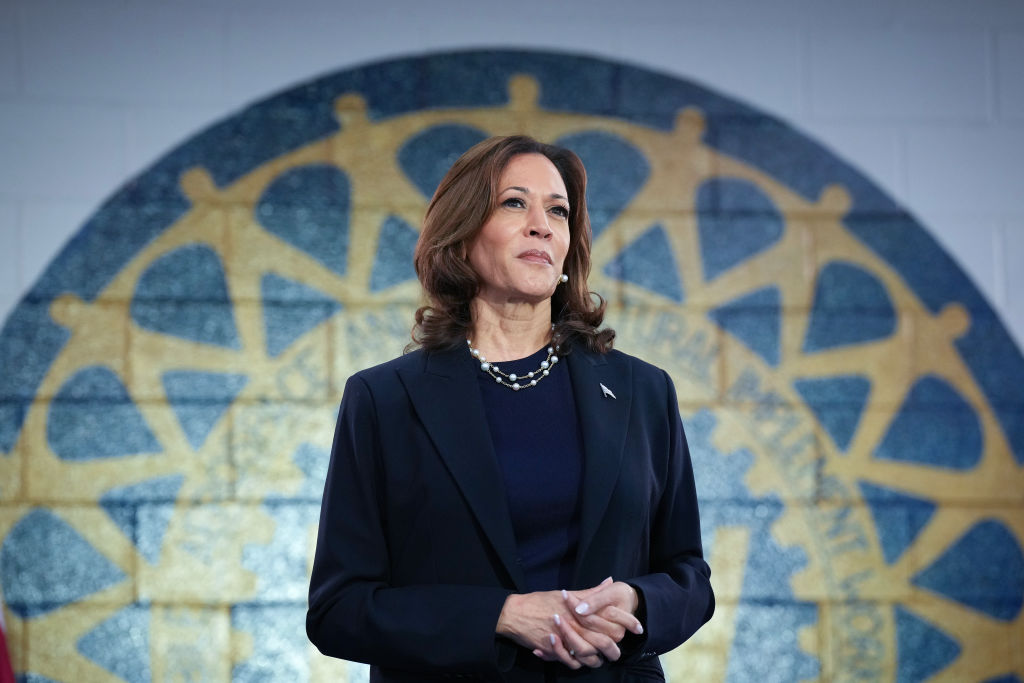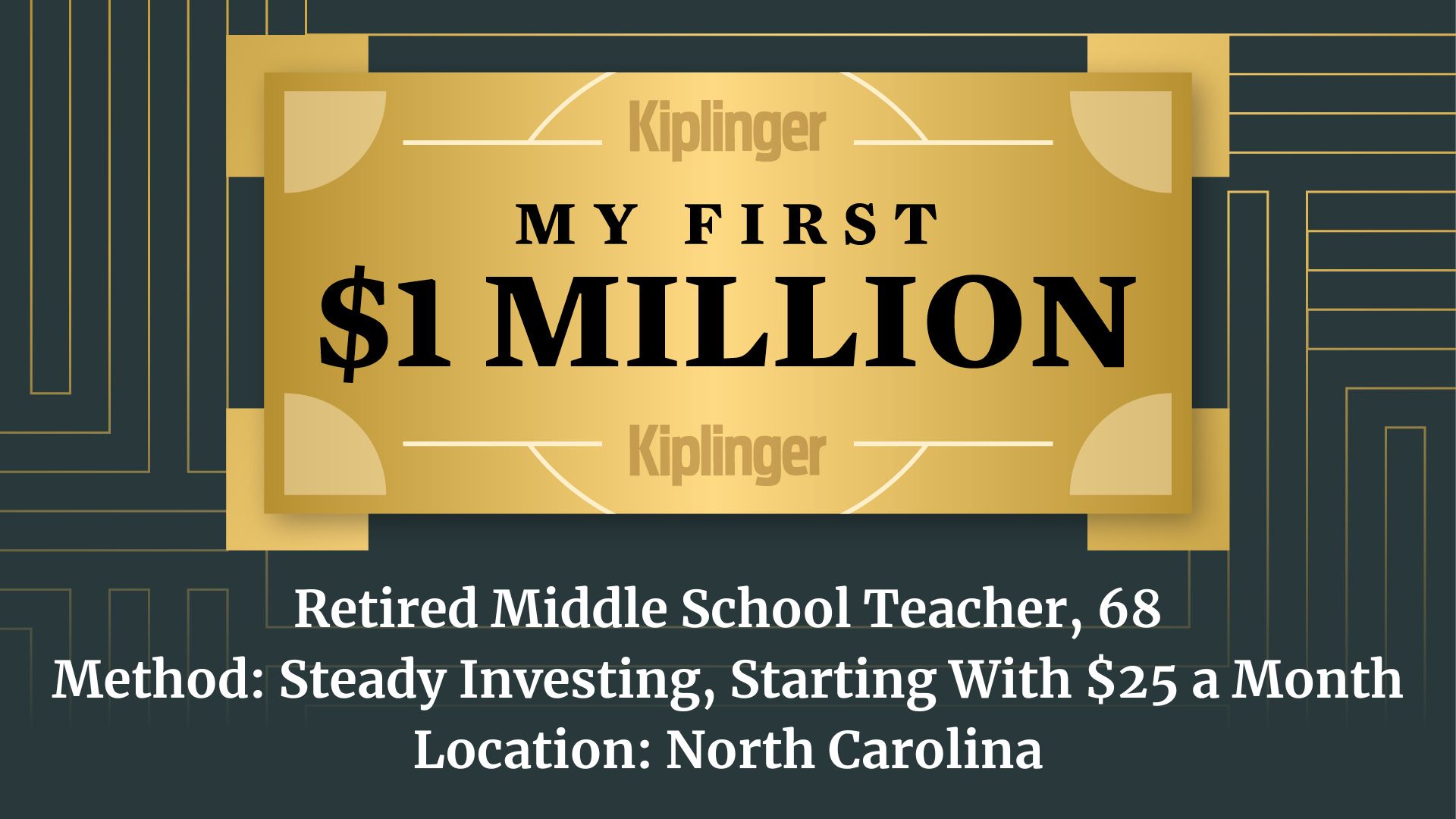Harris Said She'd Ban Corporate Price Gouging. What Does That Mean?
Harris' support for this ban comes as Americans continue to see high prices at the grocery store.

Alexandra Svokos

Vice President Kamala Harris said as president she would work to pass a federal ban on corporate price gouging on food and groceries in an attempt to lower the cost of living for families across the nation. This would be a first-of-its-kind federal law, though many states have laws addressing price gouging, and is clearly in response to Americans' frustration over their grocery bills, where inflation is felt most widely.
"My plan will include new penalties for opportunistic companies that exploit crises and break the rules," Harris said Friday at a campaign speech in Raleigh, North Carolina.
Harris said while prices went up during the pandemic due to supply chain failures, supply chains have since improved, but prices remain too high. And while households struggle to make ends meet due to elevated food prices, large food companies are seeing their highest profits in two decades and many aren't passing these savings on to the consumer.
From just $107.88 $24.99 for Kiplinger Personal Finance
Become a smarter, better informed investor. Subscribe from just $107.88 $24.99, plus get up to 4 Special Issues

Sign up for Kiplinger’s Free Newsletters
Profit and prosper with the best of expert advice on investing, taxes, retirement, personal finance and more - straight to your e-mail.
Profit and prosper with the best of expert advice - straight to your e-mail.
"Look, the bills add up. Food, rent, gas, back to school clothes, prescription medication. After all that, for many families, there's not much left at the end of the month," said Harris. "When I am elected president, I will make it a top priority to bring down costs and increase economic security for all Americans."
A ban on price gouging would prevent companies from unfairly exploiting consumers, and ideally, bring food prices down. But economists disagree on whether or not a federal price-gouging ban would work to lower food prices. While some blame corporate greed as a main driver of inflation, others believe that price gouging isn't actually a primary catalyst of inflation.
How much grocery prices have increased since the last election
Inflation has caused food prices to rise substantially over the last several years, and while prices are no longer increasing as much as they did over the last two years (rising just 1.1% over the last year), grocery costs remain a huge headache for many households. Nearly three-quarters of U.S. adults are stressed by everyday expenses, with groceries frustrating households the most, according to the latest USA Today Blueprint Credit Cards Survey.
Compared with four years ago, grocery prices are up about 20%, due to a mix of supply and demand pressures from the pandemic and other global events, reports the New York Times. And a study from GO Banking Rates found that from the last federal election on Nov. 3, 2020, to March 2024, food prices rose 25.8%, meaning $100 in groceries in 2020 would cost $125.80 today, for the same items.
Here’s a look at how much the average price of everyday food staples increased over that period as well:
- Eggs: 54%
- Milk: 36%
- Cheese and butter: 30%
- Cereals and bakery products: 28%
- Beef: 20%
- Chicken: 25%
- Fresh fruits and vegetables: 21%
The most recent Consumer Price Index (CPI) report showed that inflation continued to moderate, but key goods and services still had rising costs. In terms of which goods and services are driving inflation, food at home rose 0.1% in July, which is the same rate seen the previous month.
How do price-gouging bans work?
Over 30 states have laws around price gouging on the books, many of which apply to profiteering during wartime and states of emergency like natural disasters.
The way those laws work are generally by prohibiting raising prices by a certain percentage within a certain time period, as defined by the state. For example, in Maryland, during a state of emergency, you are not allowed to set a price for a good or service 15% or higher than the highest price of that good or service within four to 60 days before the state of emergency was declared. There are some exceptions, though, for example if you can prove that the price rise is consistent with seasonal prices based on historical data from the previous three years.
Many of Harris' critics have pointed to this policy proposal as a sign of price controls, which were instituted during inflation in the 1970s. While the policy wouldn't set prices, it would enable the Federal Trade Commission to investigate price swings, the Associated Press reported.
The specifics of Harris' idea of price gouging have not been defined. This lack of definition, as well as concerns about if this type of law would work in the way intended and if grocery prices actually need to be "saved" as inflation has cooled, have contributed to criticism of the proposal. The editorial board of the Washington Post, for example, referred to it as a "gimmick."
This is not the first time Harris has discussed tackling price gouging. In 2020, while serving as a senator, she and Sen. Elizabeth Warren, D-Mass., introduced a bill, the Price Gouging Prevention Act, banning price gouging during national emergencies, in response to the pandemic. Democratic senators continued to push for that legislation this year.
While politicians point to corporate greed causing grocery prices to rise, not everyone agrees with that assessment. Economists have pointed to rising prices as simply outcomes of changed supply and demand over the last four years. Even so, there are some cases of obvious changes to what consumers get for certain prices, like shrinkflation.
Related Content
Profit and prosper with the best of Kiplinger's advice on investing, taxes, retirement, personal finance and much more. Delivered daily. Enter your email in the box and click Sign Me Up.

Erin pairs personal experience with research and is passionate about sharing personal finance advice with others. Previously, she was a freelancer focusing on the credit card side of finance, but has branched out since then to cover other aspects of personal finance. Erin is well-versed in traditional media with reporting, interviewing and research, as well as using graphic design and video and audio storytelling to share with her readers.
- Alexandra SvokosDigital Managing Editor
-
 Your Guide to Buying Art Online
Your Guide to Buying Art OnlineFrom virtual galleries to social media platforms, the internet offers plenty of places to shop for paintings, sculptures and other artwork without breaking the bank.
-
 Samsung Galaxy S25 Ultra for $4.99 a Month: A Closer Look at Verizon’s Deal
Samsung Galaxy S25 Ultra for $4.99 a Month: A Closer Look at Verizon’s DealVerizon’s aggressive pricing makes Samsung’s top-tier phone tempting, but the real cost depends on your plan and how long you stay.
-
 I'm 59 with $1.7 million saved and lost my job. Should I retire?
I'm 59 with $1.7 million saved and lost my job. Should I retire?We asked professional wealth planners for advice.
-
 Your Guide to Buying Art Online
Your Guide to Buying Art OnlineFrom virtual galleries to social media platforms, the internet offers plenty of places to shop for paintings, sculptures and other artwork without breaking the bank.
-
 I'm 59 With $1.7 Million Saved and Just Lost My Job. Should I Retire at 59½, or Find New Work?
I'm 59 With $1.7 Million Saved and Just Lost My Job. Should I Retire at 59½, or Find New Work?We asked professional wealth planners for advice.
-
 Metro by T-Mobile Is Giving Away This Samsung Galaxy A16: Which Plans Are Eligible?
Metro by T-Mobile Is Giving Away This Samsung Galaxy A16: Which Plans Are Eligible?Metro by T-Mobile is offering free Samsung Galaxy A16 phones on eligible plans right now. Here’s how the deal works.
-
 I Drive and Collect Classic Cars: Here’s How I Got in the Game Without Spending a Fortune
I Drive and Collect Classic Cars: Here’s How I Got in the Game Without Spending a FortuneAre classic cars a hobby or an investment strategy — or both? Either way, the vintage car scene is much cooler and more affordable than you think.
-
 My First $1 Million: Retired Middle School Teacher, 68, North Carolina
My First $1 Million: Retired Middle School Teacher, 68, North CarolinaEver wonder how someone who's made a million dollars or more did it? Kiplinger's My First $1 Million series uncovers the answers.
-
 4 Financial To-Dos to Finish 2025 Strong and Start 2026 on Solid Ground
4 Financial To-Dos to Finish 2025 Strong and Start 2026 on Solid GroundDon't overlook these important year-end check-ins. Missed opportunities and avoidable mistakes could end up costing you if you're not paying attention.
-
 9 Types of Insurance You Probably Don't Need
9 Types of Insurance You Probably Don't NeedFinancial Planning If you're paying for these types of insurance, you may be wasting your money. Here's what you need to know.
-
 I'm an Insurance Pro: It's Time to Prepare for Natural Disasters Like They Could Happen to You
I'm an Insurance Pro: It's Time to Prepare for Natural Disasters Like They Could Happen to YouYou can no longer have the mindset that "that won't happen here." Because it absolutely could. As we head into 2026, consider making a disaster plan.